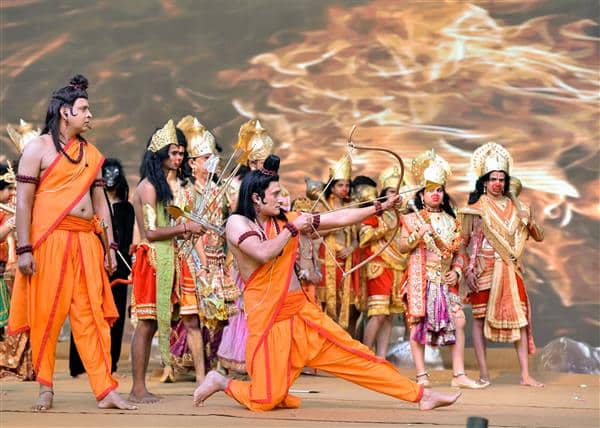Syllabus
GS 1: Indian culture will cover the salient aspects of Art Forms, literature and Architecture from ancient to modern times.
Context:
Recently, at a community event in Trinidad, Prime Minister Modi described Lord Ram as ” the divine link beyond oceans.”
More on the News:
- Recently, PM Modi made his first visit to Trinidad and Tobago as Prime Minister and marked the first bilateral visit by an Indian Prime Minister to the country since 1999.
- PM Modi was conferred with The Order of the Republic of Trinidad and Tobago, the country’s highest civilian honour.
Story of Girmitiyas
- Girmitiyas refers to the indentured Indian laborers who were taken to British colonies during the 19th and early 20th centuries to work on plantations, mainly after the abolition of slavery.
- Britain banned the slave trade in 1807 and ended slavery in 1834, causing a labour shortage in colonies like Trinidad.
- After slaves were freed in 1838, many left the sugar plantations which affected the economy.
- To solve this problem, plantation owners brought Indian workers, with the first group arriving in Trinidad on May 30, 1845.
- Indentured servitude was considered more humane than slavery but was still very harsh and exploitative for workers.
- In India, agents tricked poor people with false promises of wealth and opportunity abroad.
- Part of the labourers’ wages was kept back until the end of their contract, forcing them to remain in bondage-like conditions.
- These Indian workers had to work in extremely hard and painful conditions on plantations in faraway lands.
About Trinidad and Tobago
- A small island country in the Caribbean
- Comprises two main islands: Trinidad and Tobago.
- Capital: Port of Spain
- Population: about 13 lakh and nearly half of them are of Indian origin.
- Erstwhile a British colony; gained independence in 1962 and became a republic in 1976
Ram as the Link
- Indians who went to faraway countries could not take many things with them. But they carried their culture and traditions.
- Paula Richman, in her 2010 paper “Ramlila in Trinidad,” said that many Indian Hindus brought the Ramcharitmanas with them to Trinidad, either as a book or from memory.
- Most of them had grown up hearing the Ramcharitmanas being read and watching it performed.
- This is how Ramlila came to Trinidad. In rural villages, where Indians spoke Bhojpuri and ate chapatis, Ramlila became a popular community event.
- According to Paula Richman, elders who had performed earlier trained new actors. Experts helped with the rituals and preparations.
- People offered their sheds or garages to build the stage and effigies. Groups of women cooked delicious food over open fires and served it hot every night during the performance.
Decline and Rejuvenation
- By the late 19th century, the popularity of Ramlila started to decline.
- With the spread of formal education, Bhojpuri began to be replaced by English. As a result, the younger generation became less familiar with the Ramcharitmanas.
- Urbanisation also affected the tradition. As Indians moved to cities and rural areas became more urban, many people left behind their earlier way of life, which was centered around Hindu festivals.
Mains Question
Q. Discuss the historical and socio-economic impact of Indian indentured labour in Trinidad and Tobago during British colonial rule. How does the legacy of the girmitiya diaspora continue to shape Indo-Caribbean identity today? (10M, 150W)
Source:

